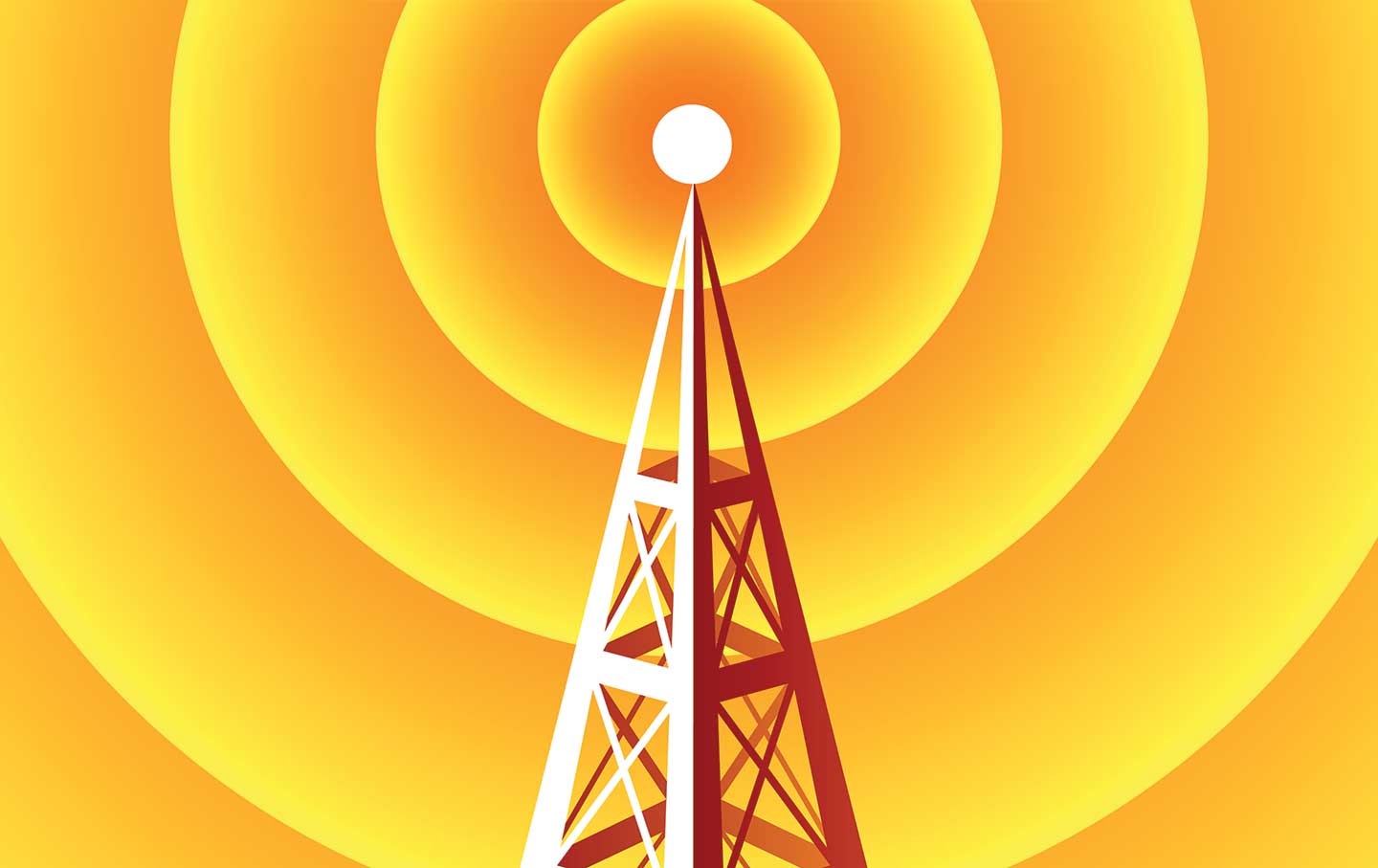
An Experiment in Tribally Owned Internet
On reservations across the country, tribes are using federal grants to create their own Internet providers. But it takes more than money to get a community online.
Hoopa Valley Reservation, California—The Hoopa Fire Department is a fortress of pinewood and eggshell-colored sheet metal against a backdrop of evergreen-blanketed hills. As the nerve center of the Hoopa Valley Tribe’s emergency response services, it has taken on a new, existential importance in recent years, as climate change brings more frequent and intense wildfires to the reservation and surrounding area here in Northern California.
Greg Moon, the tribe’s former fire chief and director of emergency services, recalls the 2020 wildfire season as especially brutal. At the height of the Covid-19 lockdown, when the tribal government was operating as a skeleton crew, two substantial fires merged in the Trinity Alps wilderness, just east of Hoopa, to form the Red Salmon Complex fire.
The walls of the fire department’s training room are plastered with maps showing the edges of Red Salmon’s reach. Burning more than 140,000 acres of forest and brushing up against the edge of the reservation, the fire’s size dwarfed that of Hoopa Valley itself. As smoke and hazardous fumes drifted toward the reservation, the tribe declared a state of emergency and braced for the possibility of a scrambled evacuation. “Everybody here was freaking out,” Moon says.
It quickly became apparent that the usual methods of relaying critical information to residents about wildfire movements, threatened areas, and safe escape routes—local media interviews, weekly radio shows, and a text-based community warning system—were inadequate. None of them can reach beyond the areas covered by the local airwaves or telecom cables. “All of that depends on Internet,” Moon says. “People have to have it. It’s the only way to tie us to the future, and to who we are as a people.”
The tribe narrowly escaped the flames of Red Salmon, but no one could be sure that it would be as lucky the next time. One thing was already clear: The reservation urgently needed better Internet access. In fact, the tribe was in the early stages of developing a plan to address the valley’s lack of service. But Red Salmon highlighted a simultaneous reality: They had much less time than they thought.
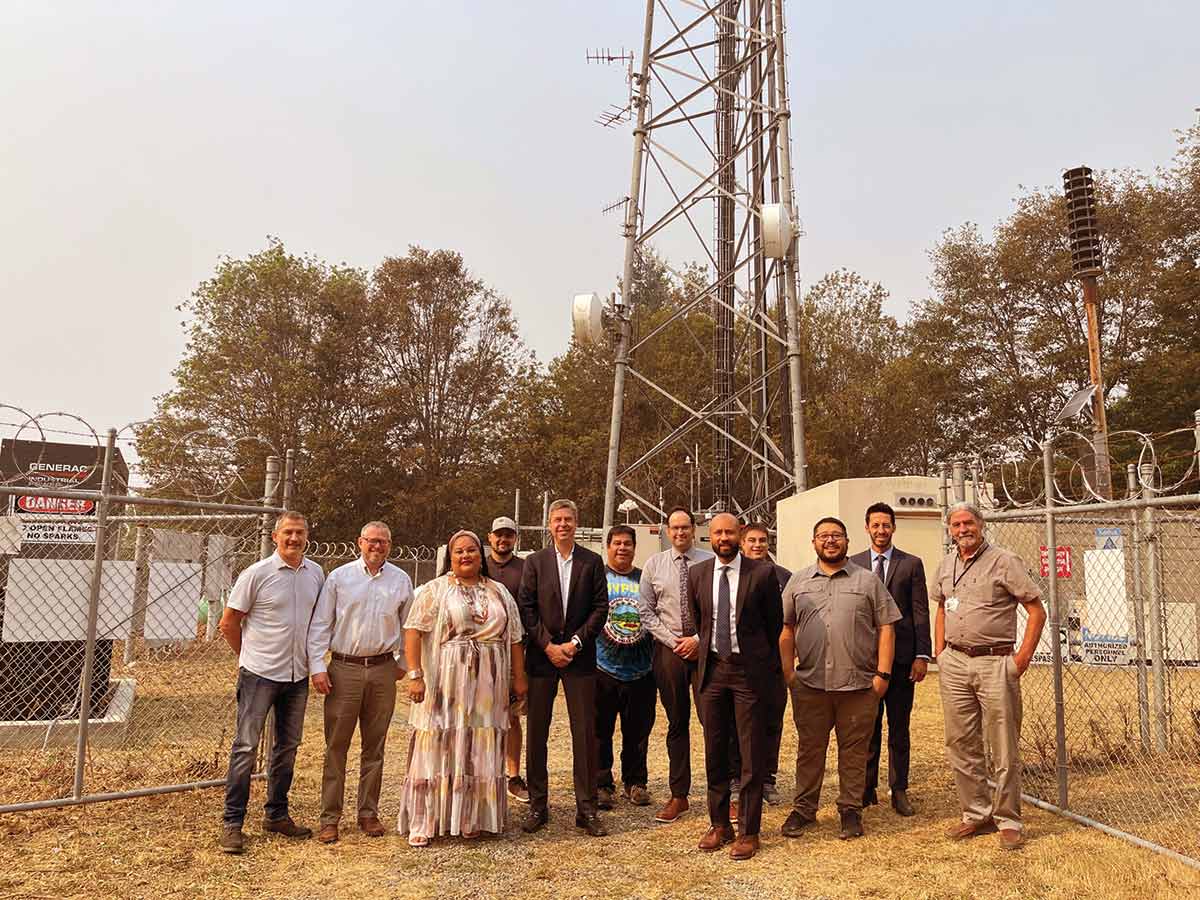
In the final bay of an old, mustard-colored mechanic’s garage in the middle of the Hoopa Valley Reservation’s main settlement is the headquarters of Acorn Wireless. This small, relatively young Internet service provider is owned and operated by the tribe’s public utilities department—an unusual arrangement in the United States, where Internet service is more often the purview of predatory corporations like AT&T and Verizon, whose regional monopolies enable them to charge exorbitant rates for uneven service.
When I arrive, Acorn Wireless is just starting to wake up. Abraham Camez, an employee, guides me from the grungy exterior into a modest open office retrofitted with servers and lined with massive flat-screen monitors. A handful of technicians are sipping coffee and discussing a recent outage and, with slightly more animation, the fantasy card game Magic: The Gathering. The atmosphere is homey and jocular for a telecom company, a taste of what happens when a community takes local infrastructure into its own hands—but it doesn’t make the work itself any less daunting.
A towering figure with a gentle manner, Camez talks me through his responsibilities as Acorn’s digital navigator, something like a social worker focused on digital literacy education on the reservation. Unlike the network technicians in the room, his is not a typical position in telecommunications. Before long, the conversation gives way to troubleshooting horror stories—such as last Thanksgiving, when a blizzard caused a three-day outage, forcing employees up the mountainside to repair the damage in below-freezing temperatures. “They were up there in the snow on Horse Mountain, frozen,” Camez says, tilting his chin toward the technicians. “I got to give you guys props.”
There are many explanations for Hoopa’s lack of connectivity, but the most glaring reason is the simple fact of its geography: It is not an easy area to service. Hoopa Valley is the largest Indian reservation in California, and its 3,300 residents are spread out across more than 140 square miles of beautiful montane evergreen forest bisected by the winding Trinity River—a tributary of the Klamath, which runs down from southern Oregon and empties into the Pacific. The valley’s thick woodlands and sharp, rocky inclines are difficult to furnish with the miles of fiber-optic cable required to bring a region online. Before the launch of Acorn, residents had to choose between a HughesNet satellite connection (more than $100 per month), a bare-bones Starlink kit ($600), unreliable wireless hot spots—or, as was often the case, nothing. “We feel that we’re rural here, but there are Indian nations in New Mexico and Arizona that still have dirt floors, don’t have running water,” Camez says. “Tribes, in general, have always been underserved.”
At the national level, the tribal broadband gap is stark. Research has found that 18 percent of the residents of reservations lack home Internet service, and the share of households on tribal land with Internet access is 21 percentage points lower than neighboring non-tribal areas. Download speeds are nearly 75 percent slower in tribal areas, yet the lowest price for basic Internet service is, on average, 11 percent higher.
While geography plays a significant role, there is also a political economy behind this disparity. As with any network infrastructure, it is cheaper and more efficient to deploy fiber in dense population centers than in rugged, rural locales. And as with any private-market commodity—as Internet service is treated in the US—there are greater incentives to serve affluent areas than impoverished ones. Indian Country often gets the short end of both sticks. It is also a consequence of colonial oppression: The federal government often forced tribes to relocate to barren or undesirable lands as a condition of their formal acknowledgment. (Hoopa is an exception; the modern reservation retains much of the tribe’s traditional homelands.)
To address these problems, Hoopa’s Tribal Council created Acorn with $2 million in funding awarded by the CARES Act in 2020. Within a year, Acorn was serving its first customers, but it wasn’t until the Red Salmon Complex fire in the summer of 2020 that the project got the boost it needed to expand its efforts: a $65 million grant awarded under the Internet for All initiative. Part of the Biden administration’s mammoth Infrastructure Act, the initiative included a special $3 billion Tribal Broadband Connectivity Program (TBCP) to expand high-speed Internet access among Indigenous nations.
Almost two years later, Acorn is adding Internet relay towers as well as building an ambitious fiber network that will serve every household on the reservation. With some additional funding, it launched several digital literacy initiatives. Realistically, however, Acorn’s current budget is only large enough to support this scope of activity for a few more years. What will happen when the current well of funding dries up isn’t clear.
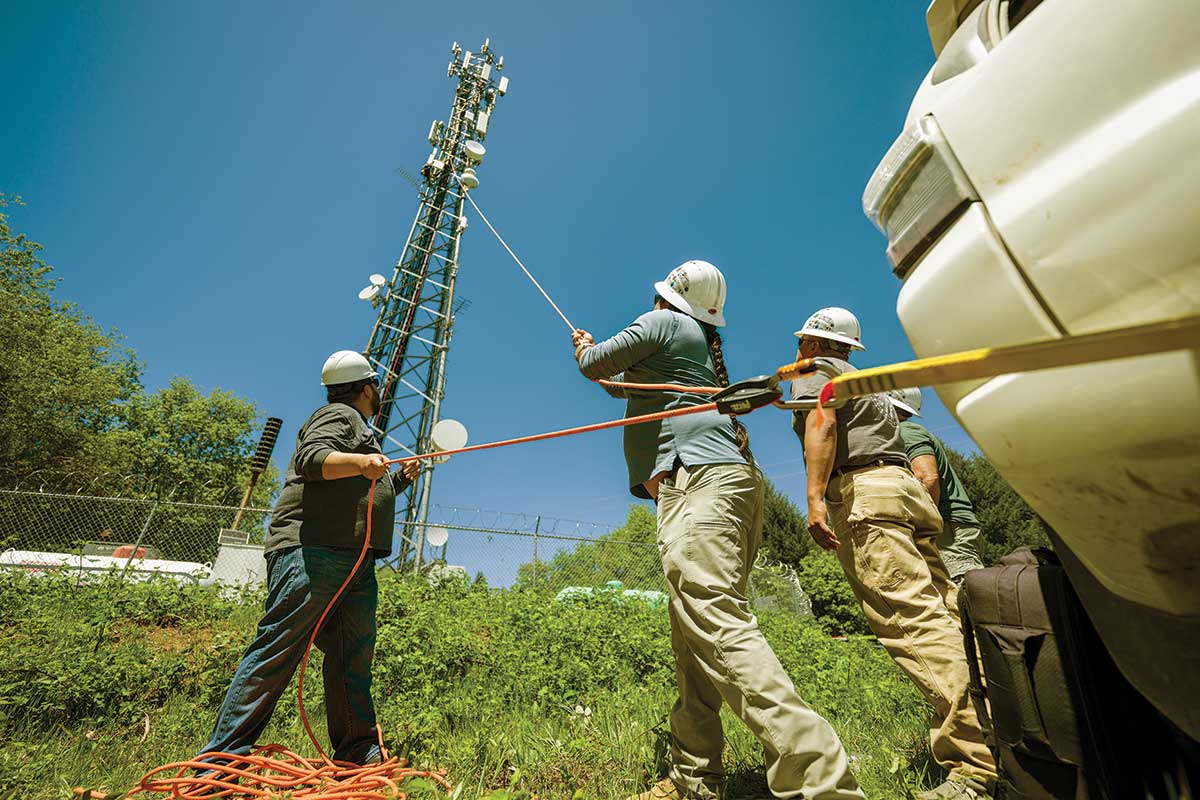
Though Hoopa got a small head start on other tribes, it is just one among many Native American tribes that have received federal funding for publicly owned networks in recent years. Almost half of the 574 federally recognized tribes have received some form of TBCP funding since 2021. Of these, about 50 have tribal Internet networks, according to an analysis by the Institute for Local Self-Reliance.
Equitable Internet access has been the occasional pet issue of elected officials over the years, but Joe Biden has quietly transformed it into a matter of frontline national policy. He has promised universal Internet access by 2030, which he calls “just as important as electricity or water,” following up with successive waves of federal funding for the construction of local broadband networks amounting to tens of billions of dollars. The political rhetoric is just catching up to what the modern public has long understood: Broadband is an essential utility, despite the fact that it is not regulated like water or electricity.
Biden’s Internet for All program amounts to the most ambitious federal effort to date to subsidize broadband. Even though much of this federal grant money will likely end up in the pockets of legacy Internet providers, some of it is finding its way into the budgets of community-led projects like Acorn. “Tribes have a pretty big uphill battle in conquering this,” says Matthew Rantanen, the director of technology for the Southern California Tribal Chairmen’s Association. “But now that money is flowing directly at tribes, I think they have a much better opportunity to build than most small municipalities.”
Popular
“swipe left below to view more authors”Swipe →Yet the Biden administration’s broadband push has also come with complications; in some cases, it has seemed as if tribes were being set up to fail. Rantanen notes that many tribes received grants that may not be able to cover the immense costs of building communication networks from scratch, especially when inflation is taken into account. “Buried fiber was around $300,000 a mile prior to Covid,” he says. “Now, because there’s been such high demand, you’re looking at $700,000 miles of buried fiber in California. The price has nearly doubled on all construction efforts.”
Many of these grants also impose onerous deadlines and heavy restrictions on how tribes can spend the money, leaving little flexibility in the event that estimates fall short of reality. In some cases, the tribes simply don’t receive enough money in the first place. “I’ve heard of tribes who’ve submitted their application for $900 million, because that’s how much it’s going to take to have build-out in their land, and they’re [not even] given a quarter of that, whatever it might be,” says Davida Delmar, a digital inclusion manager at AMERIND Critical Infrastructure, a tribally owned consulting firm that helps tribal governments develop and deploy broadband networks. “And so now they’re going to have to do what they can with what they have.”
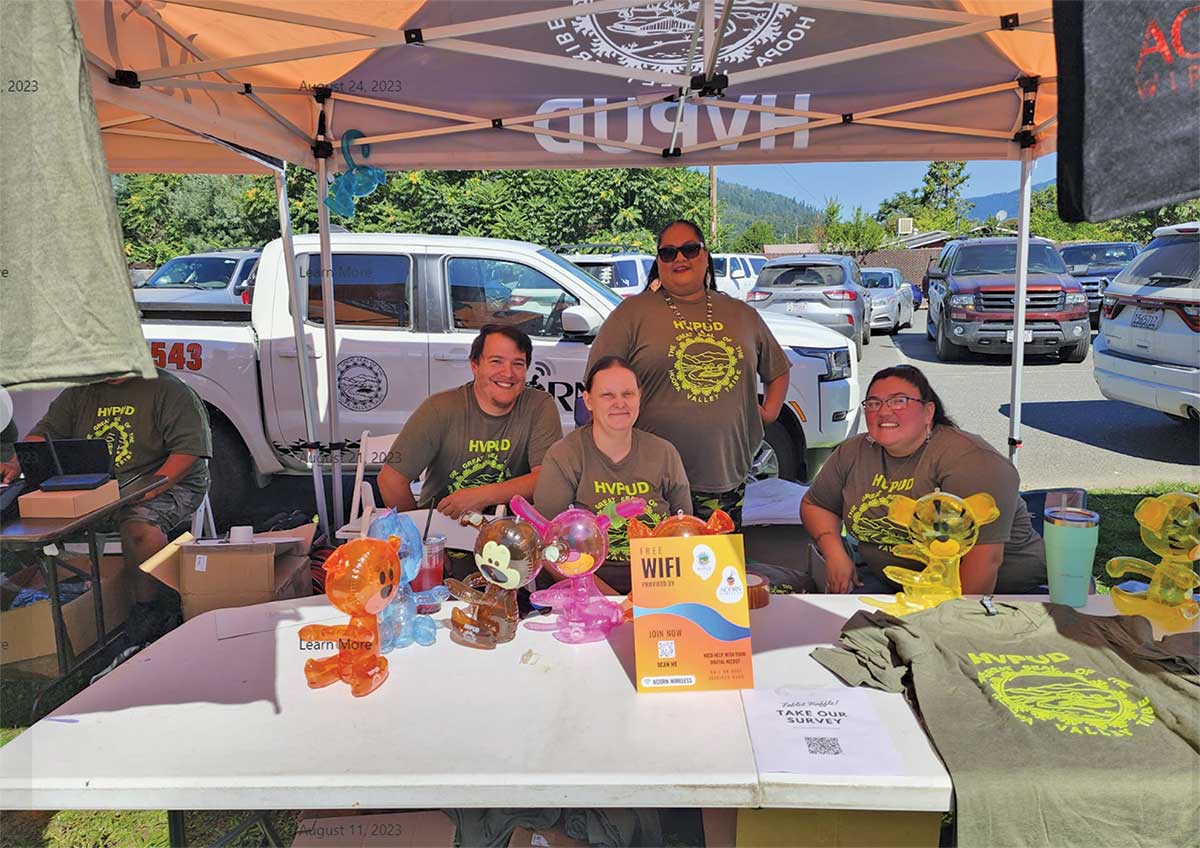
If one person could be called the force behind Acorn Wireless, it would be Linnea Jackson, the general manager of the public utilities district that oversees it. Wearing bright pink lipstick and colorful dangling earrings and exuding an air of unflagging optimism, she gives the impression of possessing the vast reservoirs of energy that the job demands. Jackson oversaw the project’s launch in 2021 as a wireless Internet service provider (WISP), a kind of hybrid between a cellular and a satellite provider that transmits data wirelessly from central towers to dishes mounted on homes and businesses. It’s a model that’s usually reserved for rural, sparsely populated areas because it’s relatively cheap to build and maintain—but wireless data transmission can be complicated in a mountainous environment. “There are line-of-sight issues,” Jackson says. “If people are tucked in the mountains and densely forested areas, service is a little bit unreliable.” Wildfires can also cause problems, burning towers or producing smoke that can interfere with wireless signals.
Acorn secured funding from the TBCP to construct a fiber-optic network on the reservation, but at the time of my visit, the build-out was still delayed by an environmental impact assessment, and Acorn was still operating as a WISP. As a result, it was only able to serve about 200 households, or one-fifth of the reservation, using a single tower. Still, Jackson has reason to be proud about Acorn’s prospects. “Tribal ownership gives us the opportunity to be able to control deployment,” she says. “It also allows us to develop our own company and train our own people for long-term resiliency.”
“It’s economic development,” Jackson adds. “It’s being able to train our own people for job creation and sustainability.”
The recent spike in interest and investment in broadband infrastructure on tribal lands grew largely out of experiences during Covid-19, which highlighted both the need for high-speed Internet and the lack of it. At the start of the pandemic, only 15 percent of Hoopa Valley residents had home Internet service that was good enough for remote work or schooling. “We had to quickly come up with solutions to be able to provide telework and online learning platforms for the kids,” Jackson says. “A lot of tribal homes are multigenerational, so you might have four generations of a family living in one home with a lack of connectivity.”
No amount of politicking can ease the logistical difficulty of maintaining Internet infrastructure on a sparsely populated mountain, but Acorn’s operation is based on the idea that local, democratic ownership can help address the coverage disparity by eliminating the profit motive. Because it is owned by the tribe and administered by the tribe’s public utilities department, Acorn can focus on equity instead of revenue. Its premium service package is set at $75 a month, because that matches the monthly FCC credit available to residents of tribal lands, which means most Acorn customers can get service at no personal cost. “I think I was paying about $120 per month [prior to Acorn],” Jackson says. “For a lot of families, that would be really hard to afford.”
Still, Acorn finds itself in a difficult position. The digital divide ultimately runs downstream from a structural failure: Internet access is doled out by a private market that is simply not designed to allocate service on the basis of need. In the absence of structural change, Acorn will need to compete with established providers for long-term sustainability without any guarantee of continued federal support.
Meanwhile, as the grant terms press tribes against frantic construction deadlines, the federal agency responsible for disbursing funds has routinely missed deadlines and fallen behind on payments, and fledgling projects have suffered from administrative incompetence at the federal level. Although the 2021 spending bill states that applications will be approved or denied “not later than 90 days” after their receipt, the National Telecommunications and Information Administration was still responding to applications from 2021 as late as last year, just months before the deadline for second-round funding. Even the original Notice of Funding Opportunity was released more than three months late.
These delays, coupled with frustrations over the federal government’s failure to help address structural barriers beyond funding, have stirred anxieties among tribal telecom advocates. According to Delmar, many tribes have been left floundering. “Sometimes you encounter folks who are just a one-person department, and they’re tasked with building a team and finding folks to build these networks [by themselves],” she says.
Acorn is not a one-person show, nor is it entirely over its head. Nonetheless, its model has yet to be fully proved. It will be difficult to sustain a small, local provider in a market of 3,300 reservation residents scattered across a vast, challenging terrain.
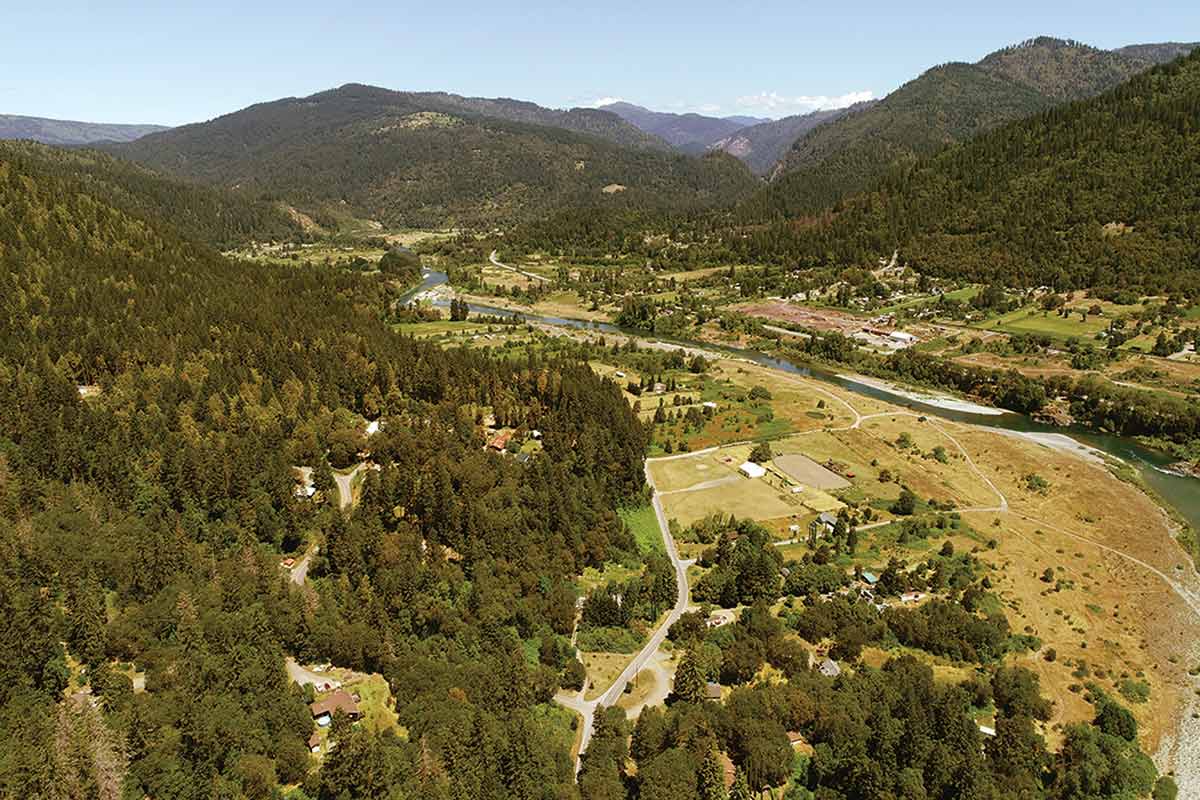
Kelly Davis apologizes for the mess as she welcomes me into her home near the WISP tower. A loyal Acorn customer with a fit, wiry frame and ash-gray hair, Davis is hosting her 5-year-old granddaughter from out of town. Alongside a trampoline and a hoop house, a smattering of children’s toys dot the yard.
After a decade away, Davis returned to Hoopa Valley just six months before our meeting. One of the reasons she left was that she was worried it wouldn’t be a healthy place for her daughter to grow up, citing the drug problems and a perceived lack of opportunities on the reservation. “I always knew I was going to come back,” she says. “I’ve given my life for everybody, and it’s my time to be me.”
Davis worked as a property manager in the Northern California towns of Chico and Red Bluff during her time off the reservation. She has since retired, and Acorn has made it a little easier to get by in Hoopa Valley: Davis uses her Internet connection to sell jewelry online. “We live in a poor area,” she says. “People can’t afford $600 to get Starlink. I couldn’t afford it. So, I figured, I’m going to support my tribe, and I’m going to go with Acorn Wireless. And I have not had an issue with Acorn Wireless up until…” Davis trails off. Her Internet service, ironically, went down earlier in the day.
No worries, though. It was back up and running by the time I arrived.
“Everybody here is all about supporting their tribe and making sure that the people are taken care of,” Davis says. “Just being able to fend for yourself is really important out here.”
For all the difficulties they face, one thing that American Indian tribes have plenty of is solidarity. In the absence of clear federal guidance, there has been a substantial amount of intertribal collaboration around the broadband build-outs, with a few notable forerunners to learn from.
One of those is the Tohono O’odham Nation, which has been offering its residents Internet access through its local utility authority since 1998. “Initially, it was dial-up service,” says Brandon Ramon, a network operations center supervisor for the Tohono O’odham Nation in southern Arizona. “But today, over our entire territory, we’ve built out about 70 percent fiber to the home. By 2025, we look to be 100 percent fiber to the home in our main reservation territory.”
Aside from the Tohono O’odham, a handful of others, including the Gila River Indian Community in Arizona and the Mohawk Nation at Akwesasne in upstate New York, have been operating independent telecom services that predate the recent federal funding wave. The Cheyenne River Sioux Tribe in South Dakota, for example, started a phone company 65 years ago with a loan acquired through the Rural Electrification Act, one of Franklin D. Roosevelt’s New Deal programs, and recently migrated into broadband.
Where the federal government has fallen short on guidance, these tribes’ experiences will be vital resources for others seeking to make the most of new opportunities, especially given the degree of technical knowledge such projects require. “I talked to a tribe that got about $26 million from the infrastructure bill,” Ramon says. “The person that I was talking to said, ‘I don’t even work for the utility company—I work for the casino. And because I’m the network administrator at the casino, the tribal council wants me to undertake this project.’ So there’s a lot of that. Some of them just don’t even know where to start.”
Matthew Rantanen, an IT worker of Cree descent who has described himself as a “cyber warrior for community networking,” has been one of the biggest movers in drawing tribal telecom knowledge resources together. For the past 20 years, he has directed the Tribal Digital Village in Southern California, a 650-mile broadband network created by a consortium of 25 regional tribes. Nationally, he is better known as a fierce advocate of tribal Internet access writ large. To Rantanen, it feels like the world is finally catching up. “It’s a small group of actors that have been pushing very hard for the last two decades, and we’re very excited to see so many more people stepping into this arena,” he says. “You’ve got to welcome in the next generation.”
Rantanen does this in part through an ongoing series of Tribal Broadband Bootcamps, which he organizes with Christopher Mitchell of the Institute for Local Self-Reliance. Tribes take turns hosting the boot camps, which serve as platforms for networking about the trials, errors, and successes in planning and executing tribally owned broadband initiatives.
In the past, tribal governments were wary of allowing private Internet service providers to lay cable across their land. After all, even as they have drawn people together, roads, bridges, and trade networks have also been technologies of colonial extraction. According to Rantanen, when private Internet providers began building extensive networks across the country in the early 2000s, they weren’t doing it with personal household use in mind; rather, they were connecting major coastal cities to facilitate securities trading and other financial transactions. There was no obvious upside to allowing telecom companies to lay cable across tribal lands. “So [the Internet companies] were like, ‘Screw it, we’ll just go around,’” Rantanen says.
Tribes aren’t the first public entities to experiment with public ownership of Internet infrastructure. Globally, it is not uncommon for governments to hold controlling stakes in their largest domestic providers. Even in the US, where the ISP lobby holds powerful sway over the FCC and state legislatures, municipalities like Ammon, Idaho, and Chattanooga, Tenn., have proved that collective, democratic ownership can be a better model at the local level. Where they succeed, such projects are able to hire locally, keep revenues within their communities, and provide service with a genuine focus on the common welfare rather than the bottom line.
For all the benefits that public broadband offers, it is unavoidably true that many attempts to build it have failed. Municipal Internet providers in this country face uphill battles against entrenched, quasi-monopolistic private providers. And when these municipal providers fail, they are typically sold off to the private providers, in whatever stage of completion they have reached, at a fraction of their cost of construction. In 2013, in one particularly extreme example, the city of Provo, Utah, spent $39 million to build a fiber network that Google ended up purchasing for exactly $1. These instances dissuade others from imagining a world in which communication networks are owned by and operated in the interest of those they connect. In a more direct sense, public expenditures wind up padding corporate profits.
Meanwhile, the need for every American to have a stable Internet connection is only going to grow. This is especially the case in Hoopa Valley: In the summer of 2022, another wildfire erupted and then collided with a torrential thunderstorm around the intersecting Klamath, Trinity, and Salmon rivers, causing landslides that disrupted their flow and killed some 40,000 fish. “Our community was freaking out, like they thought it was the end of the world,” Danielle Frank, a Hoopa tribal member, said in an interview with reporters from the Modesto Bee and the Two Rivers Tribune. “And we couldn’t tell them it wasn’t, because we had no connectivity.”
In the year and a half since then, Acorn has continued to grow. Hoopa’s experiment in public broadband remains a work in progress, embodying hopes (and facing hurdles) that are shared on tribal lands all over the country. The legacy of Biden’s Internet for All push will largely depend on the fate of Acorn and other upstart tribal broadband projects like it. Will they become enduring vehicles of community empowerment, or will they end up as AT&T acquisitions?
Since the heady days of the 1990s, the Internet has often been hyped as an economic leveler and a source of unbridled opportunity. But it has become increasingly clear in our digital era that universal connectivity, with its role in everything from coordinating disaster responses to facilitating the mundane necessities of daily life—accessing government benefits, applying for jobs, checking bank balances—is less a creator of opportunity than a bare, essential utility.
The wave of sovereign, tribally owned broadband initiatives that we see today faces myriad political vulnerabilities, from negligent federal half-measures to circling corporate vultures. But they also gesture at a more equitable model for getting online. There is still time for public projects like Acorn to flourish, but ensuring that they do will require sustained solidarity and pressure for disciplined support at the federal level. As for the nuts and bolts, these are perhaps best left in the hands of people who inhabit and love the communities these projects serve.
After showing me Acorn’s first WISP tower, Abe Camez, the digital navigator, takes me out in a company van for an impromptu tour of Hoopa. The sights include the rocky shores of the Trinity, the towering Bald Hills, and Tish Tang Campground, which he has visited since childhood. But the most beautiful thing, for Camez, is something less tangible.
“When you come into Hoopa, you have a little turn before the road drops down and you can see into the valley,” he says. “Any time that I’ve ever been away for a minute, when I hit that spot and look over the valley, I know I’m home.”
Disobey authoritarians, support The Nation
Over the past year you’ve read Nation writers like Elie Mystal, Kaveh Akbar, John Nichols, Joan Walsh, Bryce Covert, Dave Zirin, Jeet Heer, Michael T. Klare, Katha Pollitt, Amy Littlefield, Gregg Gonsalves, and Sasha Abramsky take on the Trump family’s corruption, set the record straight about Robert F. Kennedy Jr.’s catastrophic Make America Healthy Again movement, survey the fallout and human cost of the DOGE wrecking ball, anticipate the Supreme Court’s dangerous antidemocratic rulings, and amplify successful tactics of resistance on the streets and in Congress.
We publish these stories because when members of our communities are being abducted, household debt is climbing, and AI data centers are causing water and electricity shortages, we have a duty as journalists to do all we can to inform the public.
In 2026, our aim is to do more than ever before—but we need your support to make that happen.
Through December 31, a generous donor will match all donations up to $75,000. That means that your contribution will be doubled, dollar for dollar. If we hit the full match, we’ll be starting 2026 with $150,000 to invest in the stories that impact real people’s lives—the kinds of stories that billionaire-owned, corporate-backed outlets aren’t covering.
With your support, our team will publish major stories that the president and his allies won’t want you to read. We’ll cover the emerging military-tech industrial complex and matters of war, peace, and surveillance, as well as the affordability crisis, hunger, housing, healthcare, the environment, attacks on reproductive rights, and much more. At the same time, we’ll imagine alternatives to Trumpian rule and uplift efforts to create a better world, here and now.
While your gift has twice the impact, I’m asking you to support The Nation with a donation today. You’ll empower the journalists, editors, and fact-checkers best equipped to hold this authoritarian administration to account.
I hope you won’t miss this moment—donate to The Nation today.
Onward,
Katrina vanden Heuvel
Editor and publisher, The Nation
More from The Nation
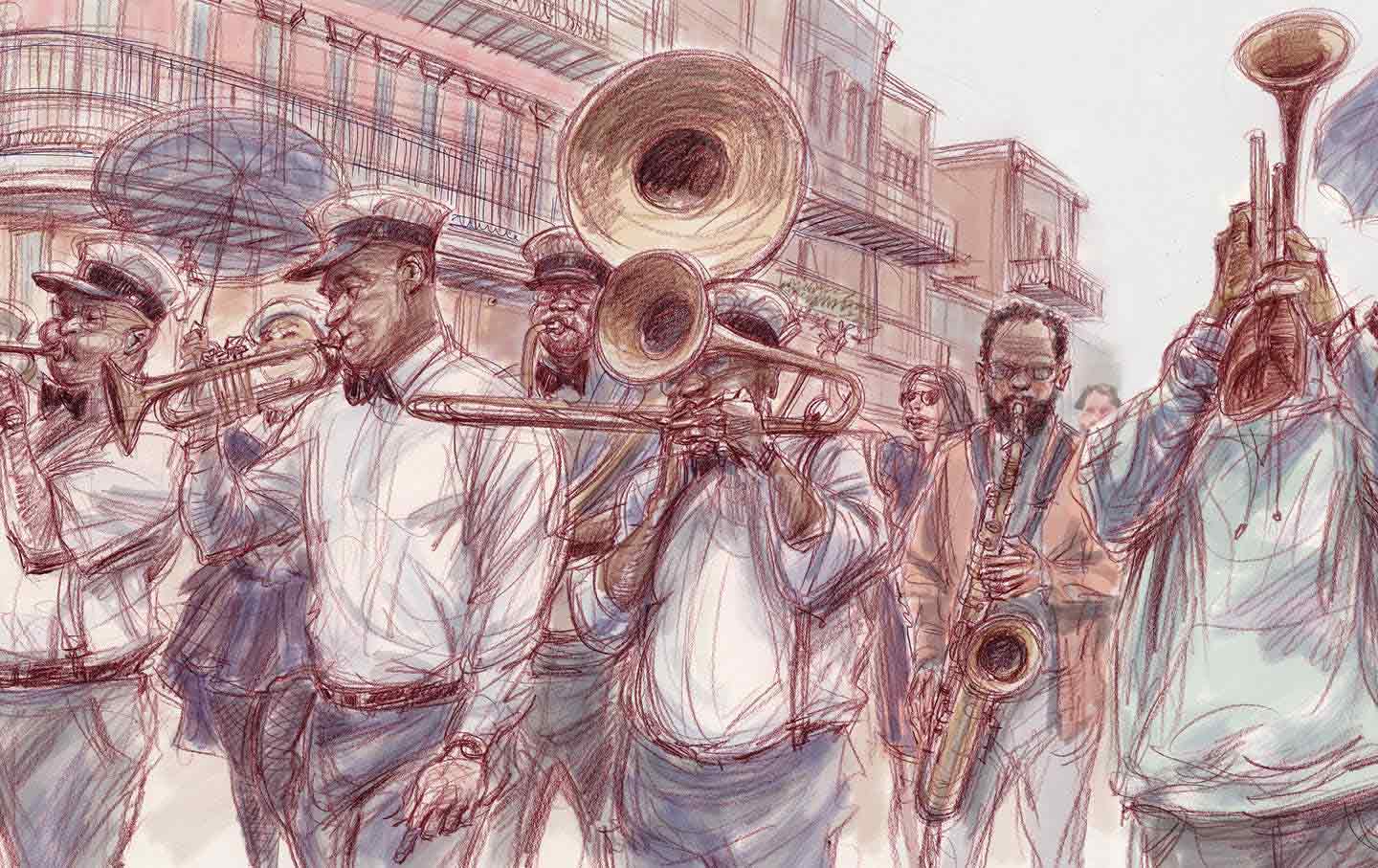
The Fight to Keep New Orleans From Becoming “Everywhere Else” The Fight to Keep New Orleans From Becoming “Everywhere Else”
Twenty years after Katrina, the cultural workers who kept New Orleans alive are demanding not to be pushed aside.

Breaking the LAPD’s Choke Hold Breaking the LAPD’s Choke Hold
How the late-20th-century battles over race and policing in Los Angeles foreshadowed the Trump era.
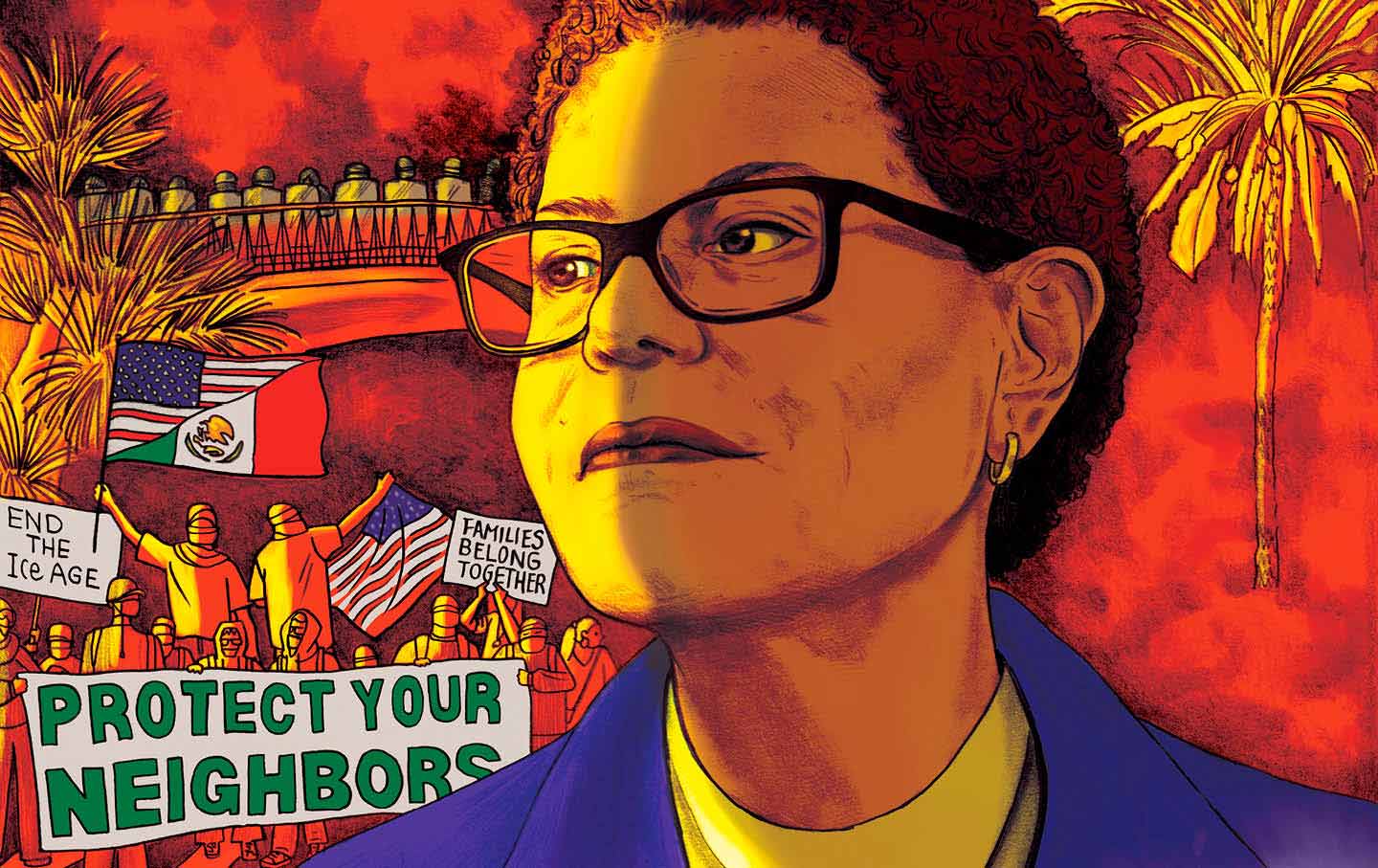
Mayor of LA to America: “Beware!” Mayor of LA to America: “Beware!”
Trump has made Los Angeles a testing ground for military intervention on our streets. Mayor Karen Bass says her city has become an example for how to fight back.
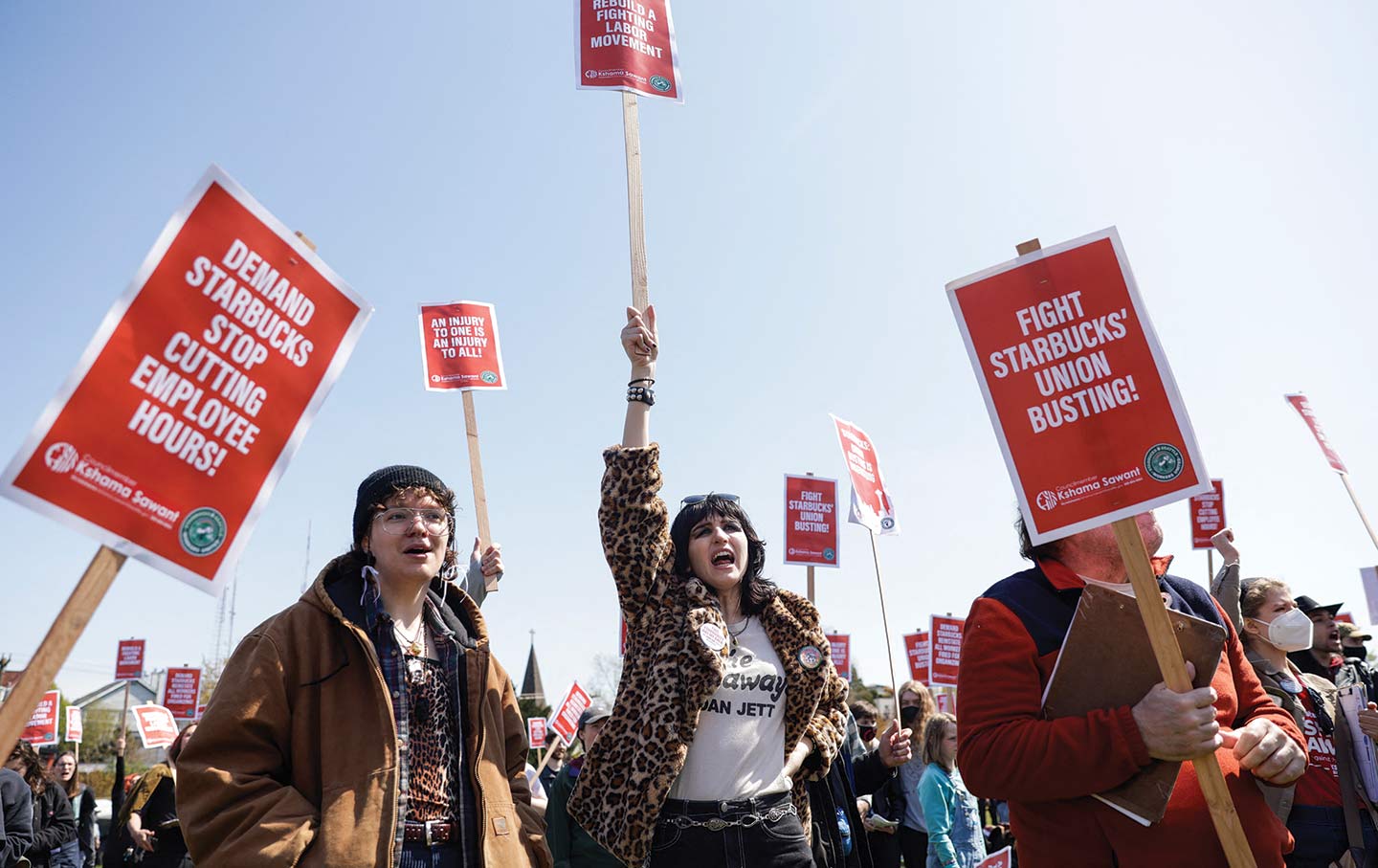
Organized Labor at a Crossroads Organized Labor at a Crossroads
How can unions adapt to a new landscape of work?
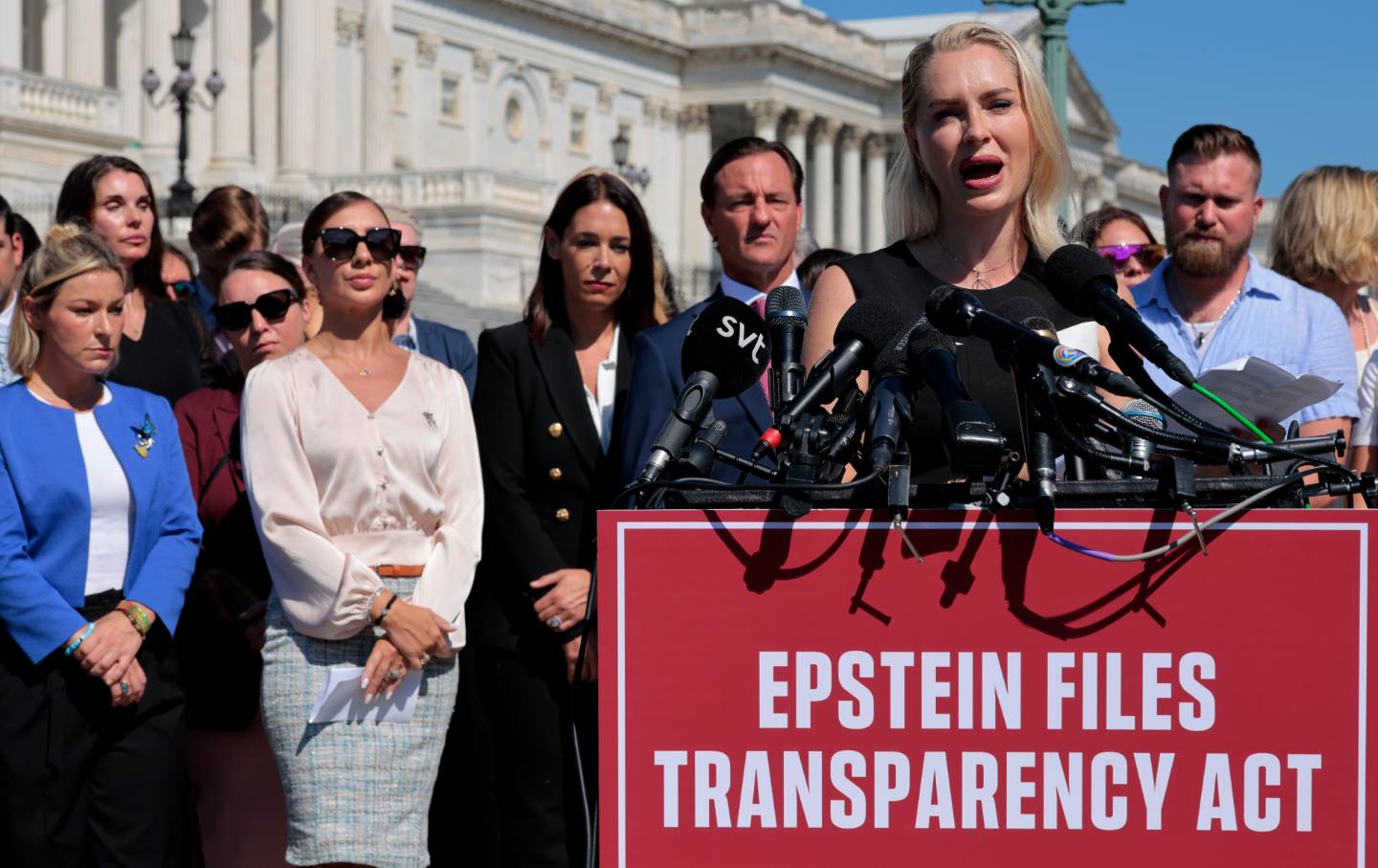
The Epstein Survivors Are Demanding Accountability Now The Epstein Survivors Are Demanding Accountability Now
The passage of the Epstein Files Transparency Act is a big step—but its champions are keeping the pressure on.

The WNBA Makes More Money Than Ever. What About the Players? The WNBA Makes More Money Than Ever. What About the Players?
WNBA players receive around 10 percent of league revenue, while the NBA gives 51 percent. With their bargaining agreement expiring in January, players want to share in the growth....


